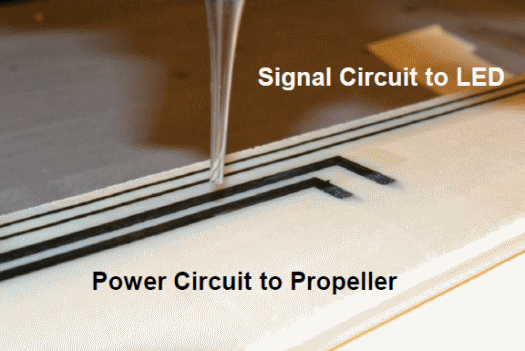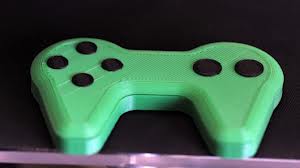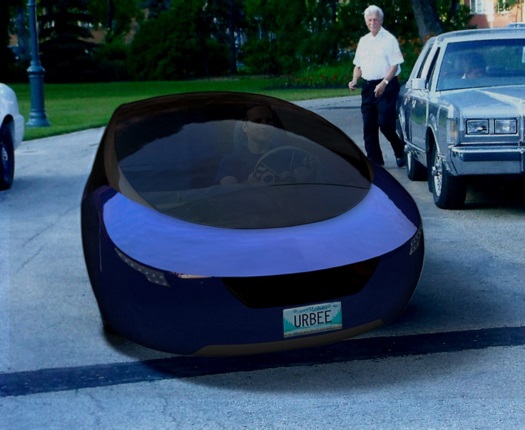BY WENDY KNEISSL, Senior Technology Analyst, IDTechEx, www.idtechex.com
In recent years, 3D printing has enjoyed a high media profile. The process actually refers to a raft of technologies that operate according to different physical and chemical principles and consequently, are compatible with different materials.
The common feature of the technologies is the generation of a 3-dimensional object from a digital model. The computational model of the print is deconstructed into a series of thin layers in the vertical plane and the printer selectively deposits, cures, melts, or sinters the relevant material to form each layer, repeating the process until the build is complete.
As discussed in the recent IDTechEx report, 3D Printing Materials 2014-2025: Status, Opportunities, Market Forecasts, the most commonly printed materials are photopolymers, thermoplastics and metals from which non-functional objects, mainly used for prototyping purposes, can be generated.
Advantages and disadvantages
The advantages of 3D printing over more traditional manufacturing methods are several. For example, the link between manufacturing cost and complexity is very much weakened (but not entirely broken), and in many cases, the need for expensive tooling is dispensed with. Materials wastage is reduced (but not eliminated), and the doorway to mass customization has been opened.
On the downside, 3D printers are slow and expensive. An industrial grade printer costs upwards of $60K (and often much more) and printing an object the size of a mug generally takes at least hours. Build volumes are also small, and materials supplies are premium priced by some of the printer manufacturers, who lock customers in to their own materials supplies.
A new era
Researchers are, however, moving 3D printing into a new era with a particular focus on adding functionality, specifically via integration with printed electronics. The ability to embed electronics within an object offers the potential to both streamline the manufacturing process, and reduce volume.
For example, large aerospace companies are looking to print electronics directly on to 3D-printed aircraft structures in a single process, reducing the space otherwise taken up by wiring and associated electrical gadgetry and freeing up space for pay-load.
Work toward this goal is already underway, with 3D printer giant Stratasys teaming up with Optomec to demonstrate the feasibility of functional 3D printing. The companies have combined the Fused Deposition Modelling approach of Stratasys, which selectively extrudes layers of thermoplastic, with the Aerosol Jet system of Optomec, which can deposit conductive inks onto conformal surfaces.
Together with partner Aurora Flight Sciences, the companies were successful in combining the technologies to yield a fully printed wing structure for an unmanned aerial vehicle (UAV) with simplified electro-mechanical integration, as shown in Fig. 1 .

Fig. 1: 3D printed UAV wing with printed electronics (Image courtesy of Optomec.)
Other developments include the so called “bionic ear.” Developed by a team of researchers at Princeton University led by Prof Michael McAlpine, the ear combines conductive inks and 3D printing to produce a functional ear that is sensitive to frequencies far beyond normal human hearing. And at Harvard University, Prof. Jennifer Lewis has developed a nanoparticle suspension of lithium titanium oxide particles and has successfully 3D printed small, very high energy density, batteries.
3D-printable plastics are also in development, with Dr Simon Leigh at the University of Warwick having created a material which has become known as “carbomorph.” This polymer is both conductive and piezoresistive enabling both electronic tracks and touch sensitivity. The team have already 3D printed a game controller with touch sensitive buttons (see Fig. 2 ).

Fig. 2: The carbomorph 3D printed game controller (Source The University of Warwick.)
Developments are also continuing apace in Asia where the Tokyo Institute of Technology, Yokohama National University, and a company called C-MET (a subsidiary of Nabtesco) have jointly developed a material called Resorcinol Diglycidyl Ether (RDGE). RDGE is a conductive photopolymer which can be used to 3D print highly complex electrodes.
Potential impact
The potential impact of all of these technologies on consumer electronic products is of course vast and the markets for 3D printing are themselves in high gear. Currently placed at US$1.5 billion, sales of products and services will exceed $4B by 2025 (IDTechEx “3D Printing 2013-2025: Technologies, Markets, Players”), and applications are transitioning from prototyping, toward actual manufacture of final products.
Major end users of 3D-printing technologies include aerospace, automotive, consumer products, and the medical fields. Surgeons, for example, are using MRI/CT scans to directly print models on which they can practice difficult invasive procedures, or else generate actual customised orthopaedic implants. 3D-printed components are already in service on the Boeing F-18 Hornet military aircraft, and in the automotive sector, a car that has an entirely 3D-printed body has been developed. Named Urbee, the car is a two-seater and weighs less than 545 kg (see Fig. 3 ).
In terms of geographic sales, the current largest market for 3D printing, accounting for 55% of global revenues, is the USA (source: IDTechEx), the remaining major markets being Europe and Japan. Europe, however, is home to the largest number of 3D printer manufacturers with Germany being particularly strong in this area.
Interest is also picking up in China, with the Universities in Wuhan and Nanjing ranking as the top publishing institutions on 3D printing research in the World, although China has yet to make a significant impact on the intellectual property landscape for 3D printing.

Fig. 3: Urbee, the 3D printed car
Patent publications globally are ramping up year on year, particularly around the areas of photopolymer and laser-based 3D printing, with end-users driving development forwards. Top publishing organisations include corporate giants such as Siemens, Boeing, and GE, along with materials companies including 3M.
Ultimately, the future of the technology will be determined by a number of factors. Costs remain a barrier to uptake at the high end of the market and the materials are in general highly overpriced. The current inability to print in more than one material type (for example, plastics and metals) in the same build remains a major limitation, but one that will be overcome by the end of the decade. And a final factor relates to speed. While no doubt faster printers will become available, the fact is that, at least for the foreseeable future, 3D printers are not going to pose a threat to traditional large-scale manufacturing techniques. They will certainly make a very major impact in the areas of high value and customized manufacturing, however, and in fact already are.
Advertisement





